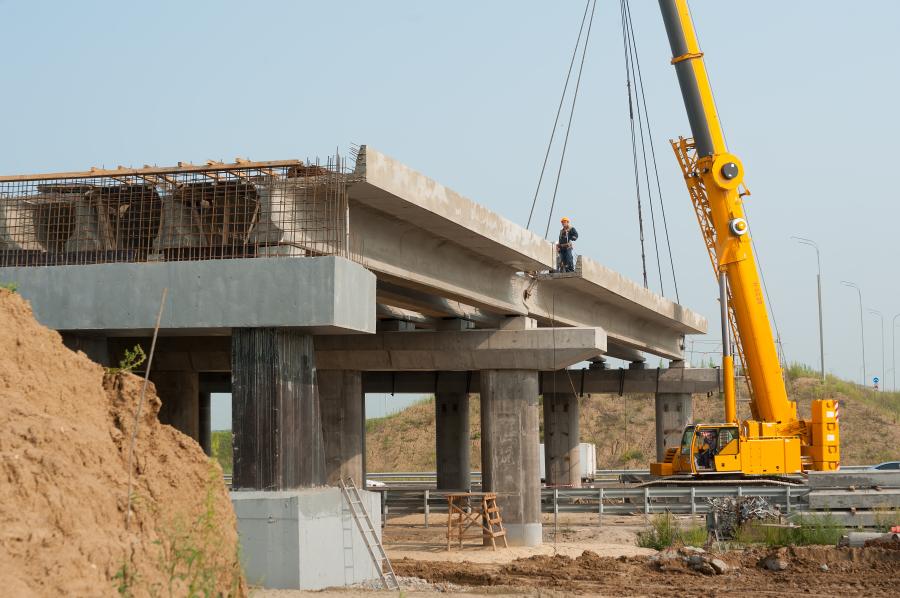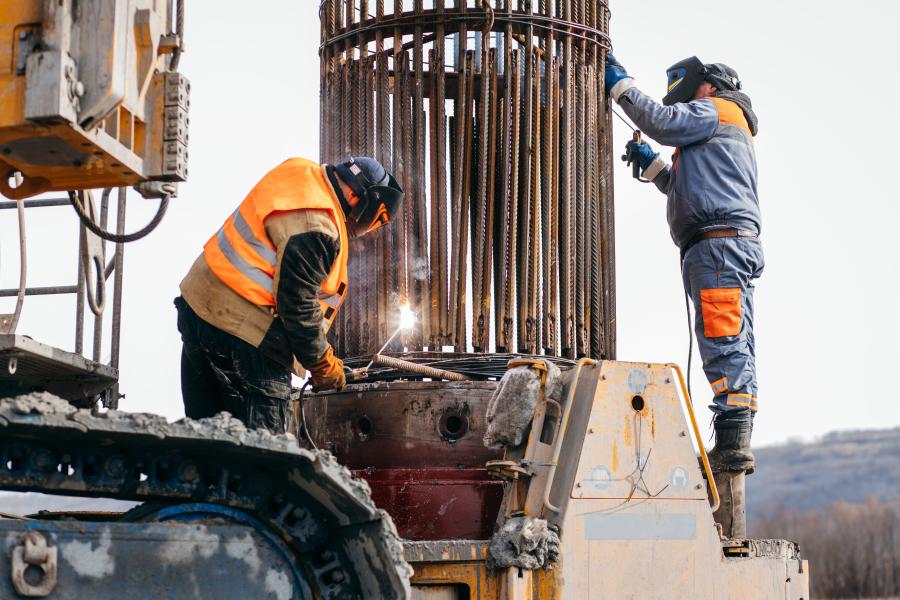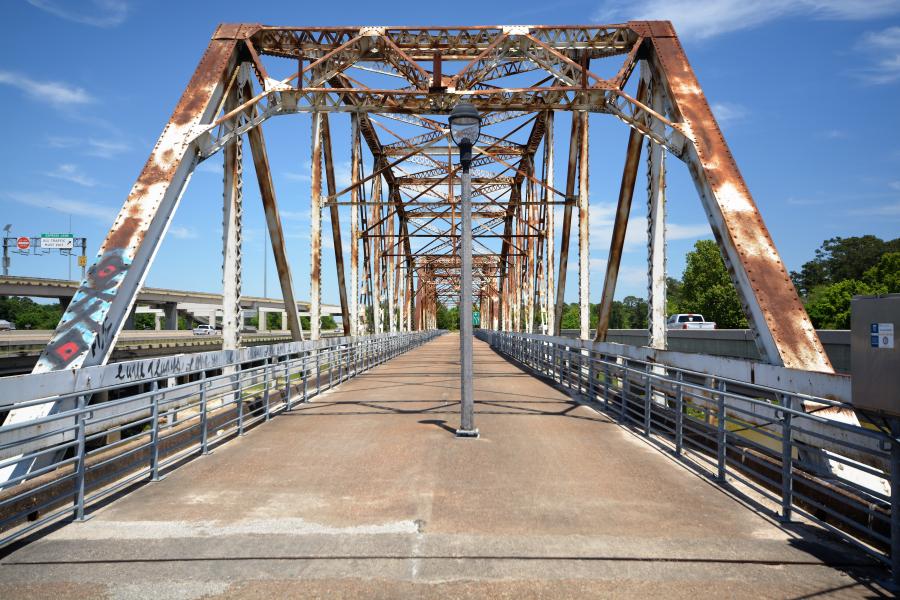Prestressing concrete with high-strength materials is one method of strengthening it. Steel cables inside the concrete are tensioned with a significant force, elongating them. They are then released, compressing the concrete. This prestressing reduces cracking from concrete shrinkage.
Climate change is being blamed for accelerated infrastructure corrosion. Increases in temperature and humidity are weakening construction materials and eating away at America's roads and bridges. The transportation design and construction industry hopes with President Biden's major infrastructure bill their structural preservation efforts will gain traction.
The reinforced concrete and steel used not only in today's roads and bridges but in other transportation venues including airport runways, railways, sewers and tunnels, are threatened by weather and environment.
Research has found that in the right environment steel can retain its strength for 100 years. But exposed to salt and wind, it begins to rust and weaken.
Coatings that help slow down the effects of water and oxygen can only do so much.
Carbonation causes concrete failure when carbon in the air mixes with compounds used in cement.
Though the resulting carbonates improve the strength and durability of the concrete, they also allow chloride to corrode the reinforcing steel inside.
Not Taking It Lying Down
At the Corrosion Research Laboratory at the University of Texas at San Antonio, work aimed at making building products safer is proving successful.
Founded in 2016, the Corrosion Lab is home to student researchers, collaborators and visiting scientists, all using the space "to integrate experimental approaches with accelerated degradation through harsh environments" including salt, temperature and humidity.
They're also utilizing computational modeling to characterize materials to better understand corrosion and help mitigate its effects.
"I hope our ongoing work generating new knowledge and techniques will positively impact safety across the board," said Brendy Rincon Troconis, assistant professor and co-principal investigator. "A report from aircraft teardowns showed that nearly 80 percent of cracks on military aircrafts have been found in close proximity to corrosion sites."
Considering that aircrafts are also exposed to mechanical stress, it's important to best understand how they affect corrosion.
This can be done through the evaluation of corrosion and attack on structural alloys in relevant conditions, said Troconis.
"All this information can feed structural life management tools and lead to more efficient maintenance schedules."
An expert in corrosion in reinforced concrete, Troconis is working with Texas-based Twin Hawk on a commercial grade coating that minimizes corrosion and improves the durability of the reinforced concrete over time.
"We have previously demonstrated the efficiency of Twin Hawk's product and are now bringing the chemical production onto campus to optimize the surface preparation and coating process parameters," she said.
The team also is expanding their testing to include accelerated corrosion chambers and field testing related to reinforced concrete applications.
The research team also is collaborating with Universidad de Costa Rica and Texas A&M University to test an environmentally sustainable corrosion inhibitor.
The goal is to increase the durability of reinforced concrete in a sustainable way while minimizing risks to humans and the broader environment.
"Corrosion is a significant risk to safety in many fields," Troconis said. "Therefore, I hope our ongoing work generating new knowledge and techniques will positively impact safety across the board."
Bridging the Future
The Michigan Department of Transportation (MDOT) is tackling carbon corrosion in bridges with a revolutionary method: Carbon fiber reinforced bridge beams.
The goal is to engineer a 100-year bridge, said Paul Ajegba, state transportation director. "The aim is bridges that last a century with minimal maintenance."
He said the technology is becoming wildly popular well beyond Michigan's borders.
Since 2001, MDOT has collaborated with Lawrence Technological University (LTU) on research into carbon fiber reinforced polymer materials in concrete bridge beams.
MDOT reports that research has reached the field stage and projects utilizing it have been deployed.
Today's bridges are built to withstand both the daily loads of thousands of vehicles and decades of extreme temperature changes.
Prestressing concrete with high-strength materials is one method of strengthening it.
In this method, steel cables inside the concrete are tensioned with a significant force, elongating them.
Before the strengthened concrete carries loads, the strands are released, compressing the concrete.
Subsequent loads on the beam have to overcome this built-in compression to actually stress the beam.
Prestressing also reduces or eliminates cracking from concrete shrinkage; it allows thinner and longer spans, according to MDOT.
Steel has been the go-to material for prestressing concrete for highway bridges, but it has drawbacks. The material is prone to corrosion and deterioration from extreme temperatures, water and deicing chemicals.
Preventing corrosion and repairing damaged areas requires time and money and can limit the lifespan of the structure, said MDOT. But carbon fiber, an innovative alternative to steel, has strands as strong as those of steel, but resistant to corrosion. They also require less maintenance over time, so they offer longer service life.
"Rusting of steel elements is the leading cause of deterioration in our bridges," said Matt Chynoweth, chief bridge engineer of MDOT. "Since carbon fiber is non-corrosive, we are eliminating that potential for damage. Using a material that will not corrode is a real game-changer."
In 2001, LTU, MDOT and the city of Southfield, Mich., deployed the first three-span carbon fiber pre-stressed concrete bridge in the country.
The Bridge Street bridge was outfitted with sensors so it can be monitored by MDOT until 2025. Since then, more than a dozen bridges have been built throughout the state using carbon fiber components.
Chynoweth said MDOT is deploying the materials strategically, using them on higher-volume routes. On a span of southbound I-75, the carbon fiber-infused beams are some of the longest in the state, at 140 ft.
Two bridges are currently being built with carbon fiber reinforced beams as part of MDOT's massive I-94 modernization project in Detroit. They will use beams with newer 0.7-in. diameter carbon fiber strands, allowing greater initial tensioning than steel, said MDOT.
The research coming out of the long partnership between the state transportation agency and LTU hopes to optimize the design process and encourage more widespread use. The team has subjected beams to 300 freeze-thaw cycles, combined fire/loading events, severe weather and other trials.
Bridge designers have gleaned the information and specifications to predict how carbon fiber reinforced beams will perform under a variety of real-world conditions. With this research data, the team can formulate design tools for future bridge projects.
AASHTO placed the team's efforts among the highest value transportation research projects in the nation. Named one of the top 16 research projects of 2020, the research also has led to new MDOT and AASHTO design specifications.
One factor limiting further deployment of carbon fiber bridge beams is the price tag. Carbon fiber elements can cost as much as three to four times more than comparable steel elements. On the flip side, though, they are anticipated to last much longer than steel, so they may prove to be cheaper in the long run.
"We've calculated the break-even point to be about 22 years based on life cycle maintenance," Chynoweth said. "But since the data points only go back about 20 years, this is a theoretical estimate."
Some reductions in cost and delivery time for the technology's components have been since one supplier, Tokyo Rope, built a fabrication facility in Michigan.
Engineers are now closer than ever to their goal of building bridges with a minimum 100-year service life, which is both a state and national target.
With more use in bridge design, carbon fiber reinforced polymer materials will get to prove their mettle with transportation engineers and Michigan motorists.
No Whitewashing the Importance
President Biden's infrastructure bill may stave off materials deterioration as it improves the nation's roads and bridges — and benefit corrosion professionals in the process.
Coatings experts weighed in on what the infrastructure legislation means for the corrosion sector as a whole and members of the Association for Materials Protection and Performance (AMPP) specifically.
Dan Adley, retired CEO of engineering consultant KTA-Tator, Pittsburgh, Pa., said every aspect of the infrastructure bill involves construction materials, where the corrosion and coatings sector has a role.
"That role might be in making certain that the material selection and the physical design of these infrastructure projects is done in such a way that the asset is protected for as long as possible," he said. "Now, it all needs to be done in a sustainable manner. That has AMPP written all over it, from the front-end design, selection of materials, and the specification for the long-term corrosion protection systems."
The advice Adley gave AMPP members applies to any construction contractor working on a transportation project that comes out of the infrastructure bill.
"AMPP has a role in making sure that the contractors who perform the work, and those that observe the quality of the performance, are trained, certified and can perform that work so that these long-term benefits are achieved."
On the tail end of the long-term operations and maintenance and management of these facilities, protection and performance professionals "have roles in ensuring the long-term sustainable protection and management of the infrastructure we're going to be investing in," said Adley.
Asked what sector members can do to prepare themselves and their businesses, he said AMPP members and the sector at large can start by being advocates for their industry. Call local and state representatives for the district you live in or where your business is located in.
"Engage them in the conversation, because all of this funding is going to flow ultimately through the states," he said. "Some of which they have immediate control over, and others they have to apply for through grants. Those are going to create opportunities for AMPP membership to participate in."
Ask simple questions, said Adley: "How is our state receiving these funds? What's its vision on how they should be dispersed? And are we incorporating sound corrosion design, management and oversight provisions in the utilization of these funds to ensure that our investment is sustainable?"
Adam Christopher, AMPP manager of government relations, believes the key for coatings professionals and other contractors is to be a part of the process.
He said the goal is "to make sure policymakers understand the need for actively planning and engaging and making sure that things are protected."
Christopher said that's one of the reasons our nation's infrastructure is in such a state of disrepair today.
"It's that we haven't had that traditional focus of making sure the best policies are in place to make sure that assets are properly maintained." CEG
Lucy Perry
Lucy Perry has 30 years of experience covering the U.S. construction industry. She has served as Editor of paving and lifting magazines, and has created content for many national and international construction trade publications. A native of Baton Rouge, Louisiana, she has a Journalism degree from Louisiana State University, and is an avid fan of all LSU sports. She resides in Kansas City, Missouri, with her husband, who has turned her into a major fan of the NFL Kansas City Chiefs. When she's not chasing after Lucy, their dachshund, Lucy likes to create mixed-media art.
Read more from Lucy Perry here.
Today's top stories


















